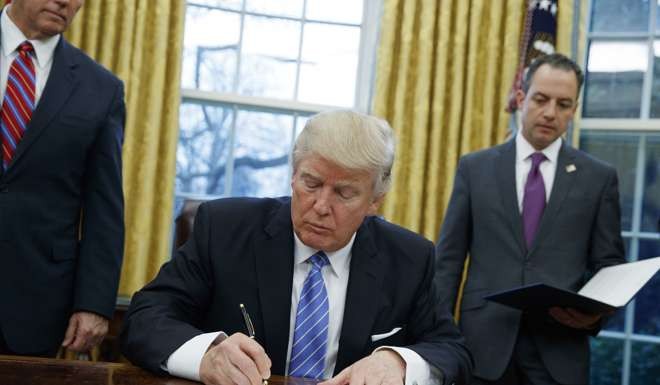
China trade blamed for loss of 3.4 million US jobs in 2001-2015
Economic Policy Institute report supports Trumps trade policies

A yawning trade deficit with China cost 3.4 million US jobs between 2001 and 2015, according to a report published on Tuesday which coincided with abrupt White House efforts to retool trade policy.
Mounting American reliance on Chinese imports and unfair Chinese trade practices have also helped hollow out the US manufacturing sector, which accounted for nearly three-quarters of all the jobs lost due to the trade gap, said the report by the Economic Policy Institute (EPI).
The non-partisan think tank’s report agreed with President Donald Trump’s blunt moves to upend prevailing policies on trade, which he has blamed for the export of American industrial jobs, chiefly to China and Mexico.

Peter Navarro, a top Trump economic adviser, has long accused China of adopting trade policies that directly undermine the US economy.
In helping launch the report, Leo Gerard, president of the United Steelworkers union, said that Trump, a Republican opposed to trade liberalisation, had been victorious among traditionally pro-Democrat voters in industrialised areas of the United States.
“And the reason for that shift is that they understand the economic anxiety that has been brought forward by this model of trade, whether it was Mexico, China, South Korea or any others that has resulted in their jobs being insecure, their wages being pushed down,” he said.
“And primarily that’s the result of China.”
Between 2001 and 2015, the US trade deficit with China more than quadrupled to US$483.2 billion, according to the report.
While Labour Department data shows the US manufacturing sector is smaller than when former president Barack Obama took office in January 2009 in the midst of the financial crisis, it has added 800,000 jobs since February 2010.
Computers and electronic parts were among US manufacturing industries that suffered the most from displacement, according to the EPI report, losing 1.2 million jobs during the period covered in the report.

“The vast bulk of the manufacturing jobs lost were in so-called durable goods industries, high-tech and very capital-intensive industries that provide very good jobs with excellent benefits in industries like steel and machine tools and electronic appliances,” said the report’s author, Robert Scott.
However, Marcus Noland, director of studies at the Peterson Institute for International Economics, rejected what he said was the report’s “basically fallacious” direct correlation between a trade deficit and job losses, noting that the United States was now at or near full employment despite a nearly US$500 billion trade deficit with China.
As electronics makers had moved manufacturing overseas, he said, this had reduced the number of manufacturing jobs in the US but promoted domestic employment in design, software, advertising and other areas.
Trade “fundamentally does not destroy or create jobs,” Noland said. “It affects the composition of employment, it affects the occupational distribution.”